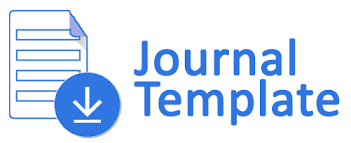Mengoptimalkan Kemampuan Berbahasa Anak Usia Dini Melalui Metode Bercerita
DOI:
https://doi.org/10.29407/pn.v6i1.14594Keywords:
Storytelling Method, Language AbilityAbstract
Children's language skills in listening and speaking activities are not optimal, children's vocabulary is still limited, so that children in conveying ideas, answering questions, repeating stories and telling stories about their experiences have not been achieved as expected. The purpose of this research is to analyze the effect of storytelling methods on the development of language skills in early childhood. This type of research is an experimental study with a nonequivalent control group design. The research was carried out in KB 'Aisyiyah Mentari Tuban with 32 children as subjects. The number of subjects was divided into 2 groups, namely the control and experimental groups as a comparison of the development of language skills. Collecting research data using observation and documentation techniques. The validity test with the Pearson correlation and the reliability test with Cronbach Alpha were carried out first then analyzed the data with the t test. The results of this study were proven by using the storytelling method to optimize early childhood language skills. Calculation using the t-test for all indicators> t critical 1.7530, it can be concluded that H0 is rejected, H1 is accepted. This means that there is an effect of storytelling methods for all indicators on children's language skills. Suggestions for educators and PAUD institutions to implement storytelling methods as a method that can stimulate children's language skills.
Keywords: Storytelling Method, Language Ability
Downloads
References
Bachri, S. B. (2005). Pengembangan Kegiatan Bercerita, Teknik dan Prosedurnya. Jakarta: Depdikbud.
Bandung, R. D., & Fathoni, A. A. (2012). Alfabeta. Sujarweni, V Dan Poly Endrayanto.
Ghozali, I. (2001). Aplikasi Analisis Multivariate dengan Program SPSS. Badan Penerbit Universitas Diponegoro.
Hartati, M. (2018). Pengaruh Penerapan Metode BCCT (Beyond Center And Circle Time) terhadap Kemampuan Membaca (Studi di PAUD Sayang Bunda Bengkulu Tengah). Annizom, 3(3).
Moeslichatoen, R. (2004). Metode Pengajaran Di Taman Kanak-kanak, cet ke-2 (Jakarta: PT Asdi Mahasatya.
Musfiroh, T. (2008). Memilih, menyusun, dan menyajikan cerita untuk anak usia dini. Yogyakarta: Tiara Wacana.
Nasional, D. P. (2010). Pedoman Pembelajaran Bidang Pengembangan Bahasa di Taman Kanak-kanak. Jakarta: Depdiknas.
Priyatno, D. (2010). Teknik Mudah dan Cepat Melakukan Analisis Data Penelitian dengan SPSS. Gava Media.
Rahayu, A. Y. (2013). Menumbuhkan kepercayaan diri melalui kegiatan bercerita. Jakarta: Indeks.
Riduwan, A. (2009). Rumus dan Data dalam Aplikasi Statistika (Cetakan Ketiga) Bandung: CV. Alfabeta.
Riyanto, Y. (2001). Metodologi penelitian pendidikan. Surabaya: Sic, 318.
Santrock, J. (2010). W.(2011). Psikologi Pendidikan (Edisi Kedua). Jakarta: Kencana Prenada Media Group.
Santrock, J. W. (2007). Perkembangan anak. Jakarta: Erlangga, 1(2), 3.
Saribu, A., & Hidayah, A. N. (2019). Meningkatkan Kemampuan Berbahasa Anak melalui Metode Bercerita. JURNAL RISET GOLDEN AGE PAUD UHO, 2(1), 6–14.
Sugiyono. (2009). Metode Penelitian Kuantitatif, Kualitatif dan R&D. Alfabeta.
Utami, S. W., & Khusnal, E. (2014). Pengaruh Metode Bercerita Dengan Gambar Terhadap Perkembangan Bahasa Anak Usia 3-5 Tahun Di Paud Sariharjo Ngaglik Sleman. STIKES’Aisyiyah Yogyakarta.
Downloads
Published
Issue
Section
License
Authors who publish with this journal agree to the following terms:
- Copyright on any article is retained by the author(s).
- The author grants the journal, right of first publication with the work simultaneously licensed under a Creative Commons Attribution License that allows others to share the work with an acknowledgment of the work’s authorship and initial publication in this journal.
- Authors are able to enter into separate, additional contractual arrangements for the non-exclusive distribution of the journal’s published version of the work (e.g., post it to an institutional repository or publish it in a book), with an acknowledgment of its initial publication in this journal.
- Authors are permitted and encouraged to post their work online (e.g., in institutional repositories or on their website) prior to and during the submission process, as it can lead to productive exchanges, as well as earlier and greater citation of published work.
- The article and any associated published material is distributed under the Creative Commons Attribution-ShareAlike 4.0 International License









